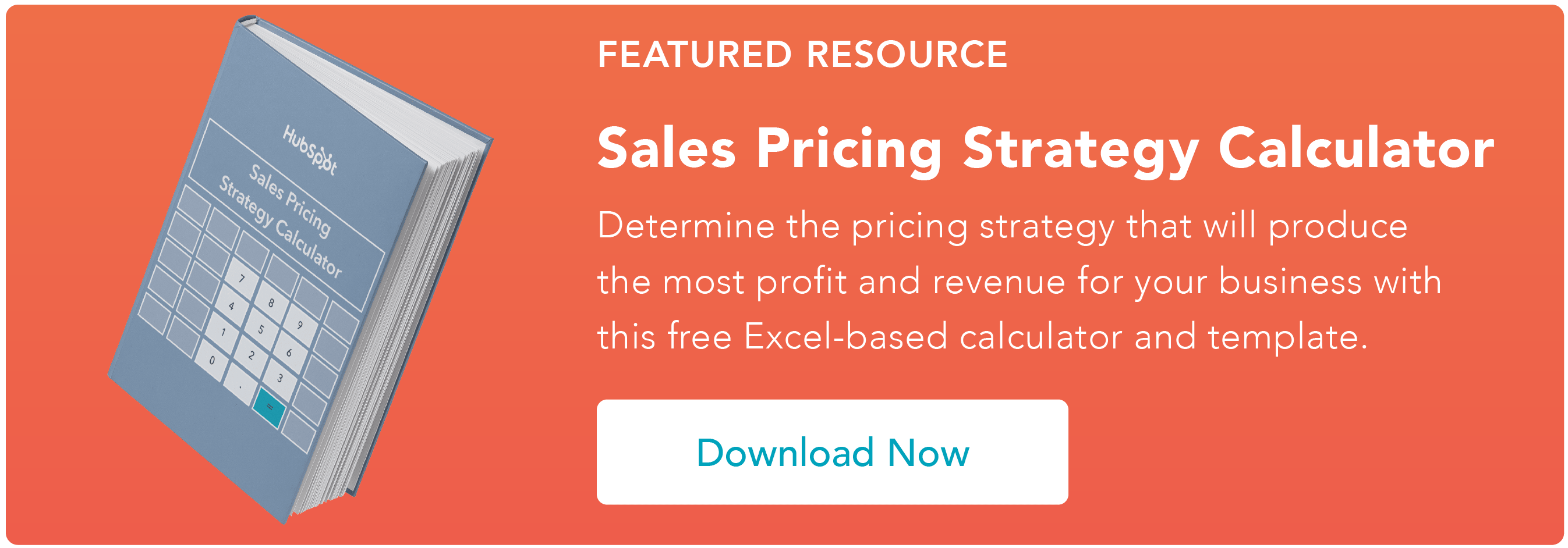Whether you're purchasing bottled water from a convenience store or a designer handbag, the selling price of these items is often much higher than it cost to produce them. In many cases, this selling price is determined using a cost-plus pricing strategy — where the selling price is determined by adding a percentage to the production cost for a product.


So, what is cost-plus pricing, and how do businesses use it?
What is cost-plus pricing?
Cost-plus pricing is also known as markup pricing. It's a pricing method where a fixed percentage is added on top of the cost it takes to produce one unit of a product (unit cost). The resulting number is the selling price of the product.
This pricing method looks solely at the unit cost and ignores the prices set by competitors. For this reason, it's not always the best fit for many businesses because it doesn't take external factors, like competitors, into account.
Cost-Plus Pricing Strategy
A cost-plus pricing strategy, or markup pricing strategy, is a simple pricing method where a fixed percentage is added on top of the production cost for one unit of product (unit cost). This pricing strategy focuses on internal factors like production cost rather than external factors like consumer demand and competitor prices. This pricing strategy is commonly used by retail stores to set prices.
Retail companies like clothing, grocery, and department stores often use cost-plus pricing. In these cases, there is variation in the items being sold, and different markup percentages can be applied to each product.
If you sell software as a service (SaaS), this pricing method isn't the best fit because the value your products provide is often more significant than the costs to produce the products.
The cost-plus pricing method is a good fit for businesses that want to pursue a cost-leadership strategy. Cost-plus pricing can be used as part of the company's value proposition by sharing its pricing policy with consumers and saying something like, "We'll never charge more than X% for our products." This transparency helps build trust with potential customers and allows businesses to build a reputable brand.
Cost-Plus Pricing Formula
The cost-plus pricing formula is calculated by adding material, labor, and overhead costs and multiplying it by (1 + the markup amount). Overhead costs are costs you can't directly trace back to material or labor costs, and they're often operational costs involved with creating a product.
Markup
Markup is the percentage difference between the unit cost and the selling price of the product. You can calculate a product’s markup by subtracting the unit cost from the sales price and dividing the resulting number by unit cost. Then multiply the final result by 100 to get the markup percentage.
Cost-Plus Pricing Example
Let's say you started a retail clothing line, and you need to calculate the selling price for the jeans. Here are the costs to produce one pair of jeans:
- Material costs: $10
- Labor costs: $30
- Overhead costs: $15
The total cost adds up to $55.00. With a markup of 50%, the formula would look like this:
Selling Price = $55.00 (1 + 0.50)
Selling Price = $55.00 (1.50)
Selling Price = $82.50
This gives you a selling price of $82.50 for each pair of jeans.
Advantages and Disadvantages of a Cost-Plus Pricing Strategy
If you're considering using a cost-plus pricing strategy, you'll want to weigh the advantages and disadvantages. Here are a few of the key points to examine.
Advantages
1. It's simple to use.
Using a cost-plus pricing strategy doesn't require extensive research. Instead, you just need to analyze your production costs (e.g., labor, materials, and overhead) and determine a markup price.
2. The price can be justified.
The cost-plus pricing strategy makes it easy to communicate to consumers why price changes are made. For example, if a company needs to raise the selling price of its product due to rising production costs, the increase can be justified.
3. It provides a consistent rate of return.
When calculated correctly, the cost-plus pricing should result in all costs being covered. And you should expect a consistent rate of return due to the markup percentage.
Disadvantages
1. The price can be set too high.
Since this pricing strategy doesn't consider competitor prices, there's a risk that your selling price is too high. This could result in a loss of sales if consumers choose to do business with a lower-priced competitor.
2. There's no guarantee all costs will be covered.
Sales volume is projected before pricing the product, and sometimes this estimate is inaccurate. If sales are overestimated, and a low markup is used to price the product, fewer items are sold, and the costs to produce the product might not be covered. This often results in a financial hit for the company.
3. There isn't any incentive to operate efficiently.
If the business bases the selling price, they could potentially make the same percentage from a product even if production costs rise. This eliminates the incentive for the business to operate more efficiently and lower the costs to create their products. When businesses don't adapt their strategies to changing conditions, it's unlikely they'll be successful in the future.
With a cost-plus pricing strategy, you can simply mark up your product to determine its selling price. However, you'll want to look at the benefits and drawbacks of this markup method to determine if it's a good fit for your business.
Editor's note: This post was originally published in March 2019 and has been updated for comprehensiveness.






![Price Skimming: All You Need To Know [+ Pricing Calculator]](https://blog.hubspot.com/hubfs/price-skimming-strategy.jpg)


![B2B Pricing Models & Strategies [+ Pros and Cons of Each]](https://blog.hubspot.com/hubfs/b2b-pricing-models-and-strategies.jpg)
